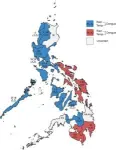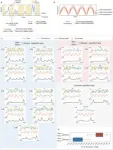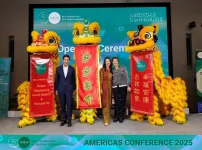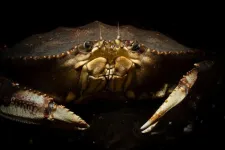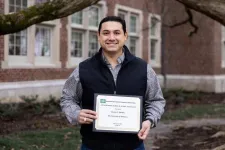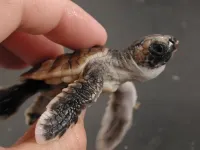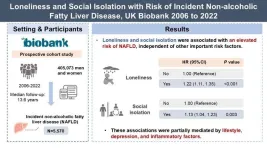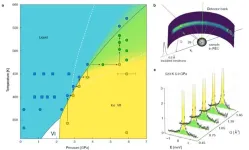(Press-News.org) The research team led by KIM Jae Kyoung, Professor in the Department of Mathematical Sciences at KAIST and Chief Investigator of the Biomedical Mathematics Group at the Institute for Basic Science (IBS), has unveiled new insights into how weather influences the spread of dengue fever. Their study identifies temperature and rainfall as critical factors driving the global surge in dengue cases and offers actionable strategies for mitigating the disease's impact.
Dengue fever, a mosquito-borne disease, poses an increasingly alarming public health challenge. According to the World Health Organization, reported dengue cases surged from 4.1 million in 2023 to over 10.6 million in 2024 in North and South America alone. This number represents the highest global count ever reported. While climatic factors such as temperature and rainfall are known to drive this trend, their complex relationship with dengue dynamics remains poorly understood. Previous studies have struggled to reconcile conflicting findings - some suggest rainfall accelerates dengue transmission, while others indicate it suppresses it.
The IBS research team hypothesized that these inconsistencies stem from the limitations of traditional methods that focus on linear relationships or independent effects. To address this, the researchers utilized GOBI (General ODE-Based Inference), a novel causal inference framework that the IBS group developed in 2023. This method captures both nonlinear and combined effects of climatic factors, enabling a more nuanced analysis of the relationship between weather and dengue incidence.
The study focused on 16 regions of the Philippines, selected for their diverse climatic conditions, to examine how temperature and rainfall jointly affect dengue dynamics. There were distinct patterns of dengue regulation across the Philippines, driven by the combined effects of temperature and rainfall. Rising temperatures were consistently associated with higher dengue incidence across all regions. On the other hand, rainfall showed contrasting effects depending on the location of the region. In eastern areas, rainfall increased dengue incidence, while in western regions, rainfall suppressed it.
The most important factor turned out to be the variation in dry season length, which was identified as critical to explaining the contrasting effects of rainfall. In regions with low variation in dry season length, rainfall tended to flush out stagnant water, reducing mosquito breeding sites and suppressing dengue transmission. On the other hand, in regions with high variation in dry season length, sporadic rainfall created new breeding sites and weakened the flushing effect, driving an increase in mosquito populations and dengue cases.
The role of dry season length has largely been overlooked in previous research but proved to be a decisive factor in this study. This discovery offers a fresh perspective on the intricate relationship between rainfall and dengue dynamics.
To validate their findings, the researchers extended their analysis to Puerto Rico, a region with distinct climatic zones. Data from municipalities including San Juan, Adjuntas, and Ponce exhibited similar regulation patterns, underscoring the generalizability of the results.
“Our findings provide robust evidence for how climatic factors influence dengue transmission in diverse environments. This represents a significant step toward understanding how climate change may impact mosquito-borne diseases globally,” said first author Olive R. CAWIDING.
The study’s findings have immediate applications for optimizing dengue intervention strategies. For low-variation regions, natural flushing effects during the rainy season may allow for scaled-back intervention efforts, freeing resources for other priorities. Specifically, consistent and year-round intervention efforts are necessary in high-variation regions to counteract the breeding-friendly conditions created by sporadic rainfall.
Furthermore, the study highlights the importance of monitoring dry season length as a predictive factor for dengue outbreaks. By tailoring strategies to specific regional climate patterns, public health agencies can allocate resources more efficiently and effectively to combat the spread of dengue.
The study represents a significant turning point in understanding how climate change impacts not only dengue fever, but also other climate-driven diseases such as malaria, influenza, and the Zika virus.
CI KIM Jae Kyoung stated, “This research is crucial as it overcomes the limitations of traditional methods for detecting nonlinear relationships and clearly elucidates the complex interactions between climatic variables and infectious diseases through an advanced causal inference algorithm. This approach can also be applied to the analysis of various diseases linked to climate.”
While the study provides robust insights, the researchers acknowledge certain limitations, including the lack of mosquito population data and socioeconomic factors such as healthcare accessibility and human mobility. Future studies with access to more granular data, such as weekly dengue incidence and mosquito dynamics, could further refine these findings.
The study, titled “Disentangling climate’s dual role in dengue dynamics: a multi-region causal analysis study,” was published online in Science Advances, a sister journal of Science.
END
INSEAD, The Business School for the World, celebrated five years of impact of its San Francisco Hub for Business Innovation during its second Americas Conference 2025 on 7-8 February.
Over 250 business leaders, government officials, INSEAD alumni, faculty, and staff convened for insightful and lively conversations centered around the theme: ‘The Future is Now: Bridging Business, Technology, and Humanity’.
The central question driving all the debates was: How can we harness the incredible potential of AI while prioritizing the well-being of humanity. Key themes that emerged included the ability for leaders to see beyond AI hype, a need to embrace disruption, ...
A study published in Science Advances reveals a novel strategy that allows tumors to evade the body’s immune response critical for their elimination. Researchers at Baylor College of Medicine and collaborating institutions discovered in a mouse model of non-small cell lung cancer that tumors that express protein MAGE-4 and have lost the Pten gene, a tumor suppressor, accelerate their development and progression into metastasis. In the mouse model and human tumor samples, MAGE-4 drives the accumulation of plasma immune cells that suppress antitumor immunity. The study points at novel potential therapeutic ...
Dungeness crab, Pacific herring, and red abalone are among the marine species most vulnerable to the changing climate's effect on California's coastal waters, a new study led by UC Santa Cruz researchers finds. In a paper published on February 12 in the journal PLOS Climate, the team seeks to help the California Department of Fish and Wildlife (CDFW) in its efforts to develop and implement climate-ready fisheries management strategies that adapt to challenges such as rising ocean temperatures, acidification, and deoxygenation.
The study, "A Collaborative Climate Vulnerability Assessment of California Marine Fishery Species," was led by Timothy Frawley, an assistant ...
Charles Martinez, assistant professor and Extension specialist in the Department of Agricultural and Resource Economics at the University of Tennessee Institute of Agriculture, recently received the Emerging Scholar Award from the Southern Agricultural Economics Association (SAEA). The award is presented to high-performing, early-career professionals with demonstrated research and resulting publication activity.
Martinez was chosen among peers nationwide for this distinguished honor. He received the award February 3 during the annual SAEA meeting in Irving, Texas.
“In a short time, Dr. Martinez has established himself as ...
A new study from researchers at the University of North Carolina at Chapel Hill provides the first empirical evidence that loggerhead sea turtles can learn and remember the unique magnetic signatures of different geographic regions. This discovery offers new insights into how turtles and other migratory animals navigate vast distances to reach specific foraging and breeding grounds. The findings, published in the journal Nature, also suggest that sea turtles possess two distinct magnetic senses that function differently to detect the Earth’s magnetic field.
Loggerhead turtles are famous for their extraordinary ...
ROCHESTER, Minn. — Heart surgery is a serious and invasive medical procedure, and that can be intimidating for a patient. A new study published in Mayo Clinic Proceedings suggests that virtual reality (VR) can be an effective tool to reduce preoperative anxiety in older patients undergoing their first open-heart surgery. While much of the research to date using VR involved younger patient populations, these research findings suggest that immersive VR was effective and well tolerated in older ...
The financial and emotional toll borne by mothers whose adult children have experienced incarceration is often overlooked but can exacerbate financial burdens, especially for Black mothers, according to new research from Rice University sociologist Brielle Bryan.
The study, “Maternal Wealth Implications of Child Incarceration: Examining the Upstream Consequences of Children’s Incarceration for Women’s Assets, Homeownership and Home Equity,” appears in a recent edition of Demography and explores the wealth disparities and racial inequities that intensify these burdens.
The research focuses ...
Under embargo until 12/02/25 12:00PM EST/17:00PM GMT
It’s been a long-held belief that absolute pitch - the ability to identify musical notes without reference - is a rare gift reserved for a select few with special genetic gifts or those who began musical training in early childhood. However, new research from the University of Surrey challenges this, demonstrating that adults can acquire this skill through rigorous training.
The study involved a diverse group of 12 adult musicians, with varying levels of musical experiences, who participated in an eight-week online training program. ...
Loneliness and social isolation have been linked to an elevated risk of non-alcoholic fatty liver disease (NAFLD), according to a groundbreaking study conducted by researchers from Central South University and the Army Medical University in China, in collaboration with the Karolinska Institutet in Sweden. Published in Health Data Science, the study analyzed data from over 400,000 participants in the UK Biobank, shedding light on the far-reaching impacts of social factors on liver health.
The research team, led by Professor Jiaqi Huang and Professor Jin Chai, sought to explore whether loneliness and social isolation—two ...
In everyday life, we typically encounter water in one of three familiar states – solid, liquid or gas. But there are in fact many more phases, some of which – predicted to exist at high temperature and pressure – are so strange they’re referred to as exotic. State-of-the-art neutron spectrometers and sample environment infrastructures at the Institut Laue-Langevin (ILL) have enabled the first experimental observation of one of these exotic phases – plastic ice VII.
Plastic ice VII was originally predicted more than 15 years ago by molecular dynamics ...

